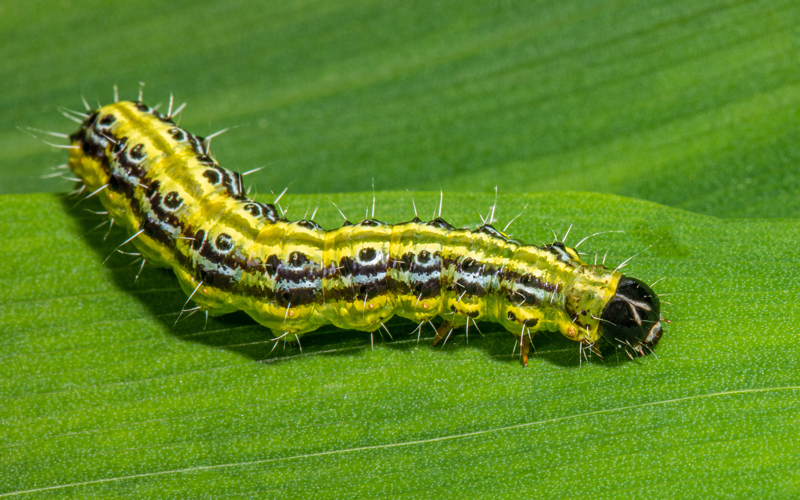
Sector warning for Box Tree Caterpillars
Box tree caterpillars are the larvae of a moth that feed on box plants. Due to the milder winters and warmer springs, the larvae activity happens progressively earlier in the year and has established itself around the country, particularly in the South-East of England. There are at least two waves of box tree moth each year, with the most activity being seen from April to October. During these months, the caterpillars will have finished feeding and emerged as adult moths by June. The second wave of hatched larvae and caterpillars is usually around late July to Early August.
How do I know my box plants are affected?
The tell-tale sign of a box plant being affected is that there is clear defoliation, or you find webbing and caterpillars on box plants. The caterpillars will cover their feeding area in webbing, which will cause patches of dieback when they are eaten. It is important to be able to distinguish this type of dieback from the dieback that is caused by box blight. Box blight is a fungal disease of the box plant that causes bare patches and dieback which h typically occur I the wetter months of the year.
In terms of identifying box tree caterpillar, the eggs are pale and laid in overlap with each other on box leaves. The larvae are typically concealed in a cocoon of white webbing that is spun among leaves and twigs. Newly hatched, they are a greenish yellow with black heads. They will grow up to 4cm in adulthood, where they will change to a greenish yellow body with thick black stripes and thin white stripes along their body. These caterpillars are capable of stripping bark, so it is also worth looking out for damaged bark when assessing the box tree for defoliation and dieback. The adult moth will usually have white wings with a light brown border.
What can I do if my box tree is affected?
Pheromone traps can indicate whether there are moths in the area and how many there are. Where possible, the caterpillars should be removed by hand. It is also noted that mixed nematode biological control that is sold as fruit and vegetable protection has some affect. There are also reports of garden birds feeding on the caterpillars in some parts of the UK however it isn’t clear if this predation will help monitor the box tree moth populations.
There are some cases where box tree has needed so much spraying and trapping to keep them free from caterpillars, that it is better to choose an alternative to plant.
What are the alternatives to box tree?
There are many alternatives to box tree. The Association recommends that you conduct research to suit your project needs, however other parts of the industry have good experience in and therefore recommend the following:
Ilex Crenata: Also known as Japanese Holly, is a slow growing evergreen shrub. This shrub has glossy dark green leaves, with white flowers in the summer followed by dark red-black fruits.
Phillyrea latifolia: Also known as green olive shrubs, an evergreen shrub with small clusters of yellow-green flowers appearing in spring followed by black fruits that grow after a hot summer.
Baccharis patagonica: A slow growing evergreen shrub with dark leaves, light teeth, and small creamy yellow flowers that bloom in clusters from late spring to early summer.
Lonicera nitida ‘Elegans’: Also referred to as Lonicera Hedge, this is a dense evergreen plant that is easy to maintain and quickly grows to a medium height.
Euonymus microphyllus: Also referred to as Japanese Spindle, is an evergreen shrub that is ideal for a low growing hedge.
Conclusion
The Association recommends that box plants are checked frequently from early spring onwards to get ahead of the larvae and manage the box plant before too much damage happens as they develop. The RHS are also conducting a survey to help map out the box tree population and their impact, a link to this survey can be found in the further reading of this article.
Further reading
List of the best box alternatives / RHS Gardening

